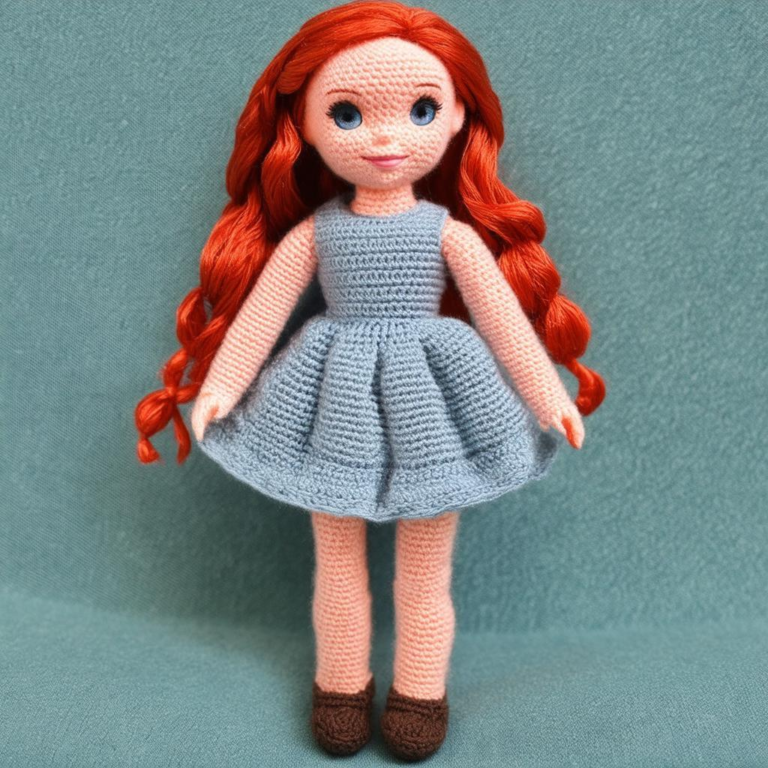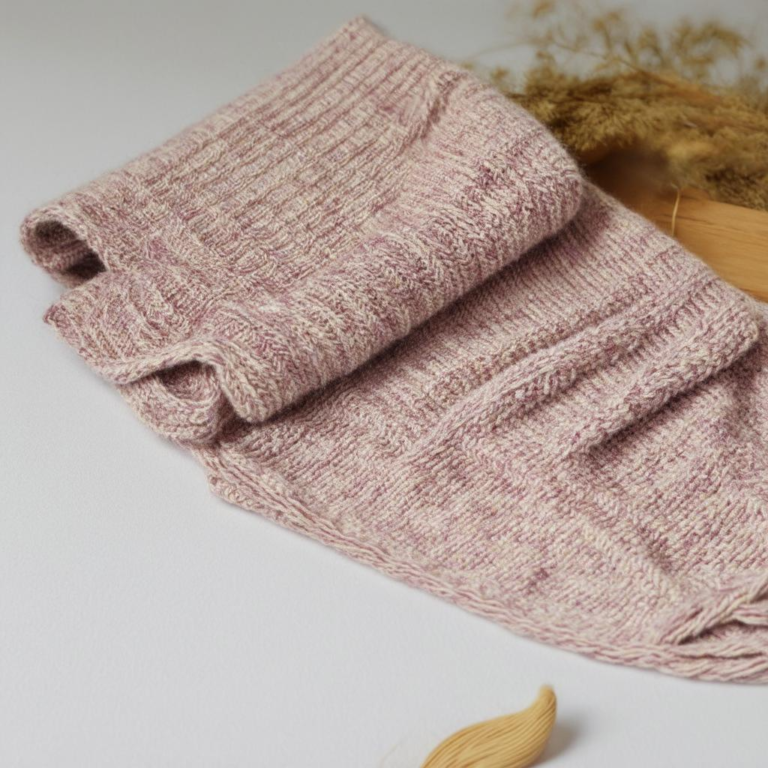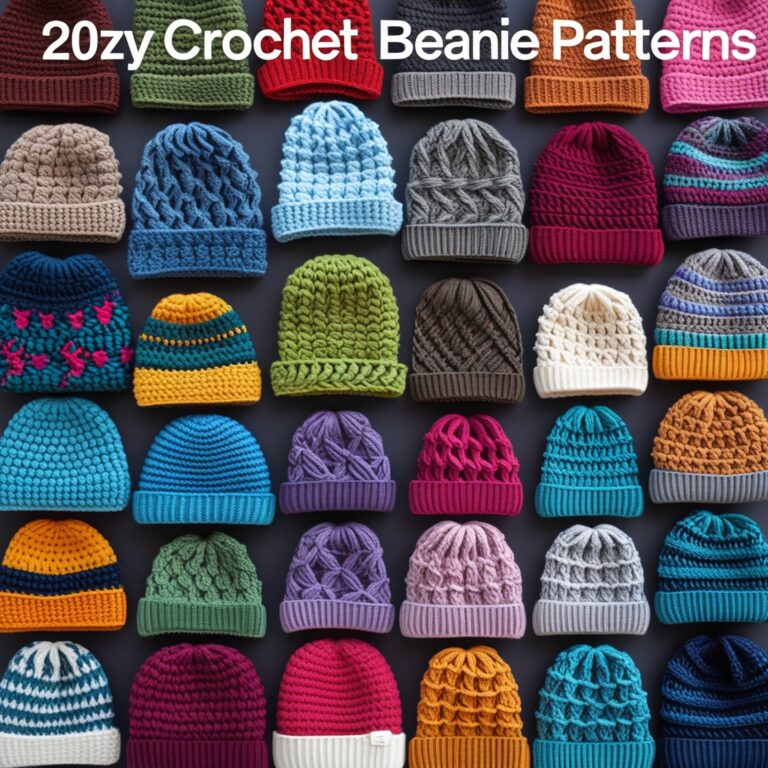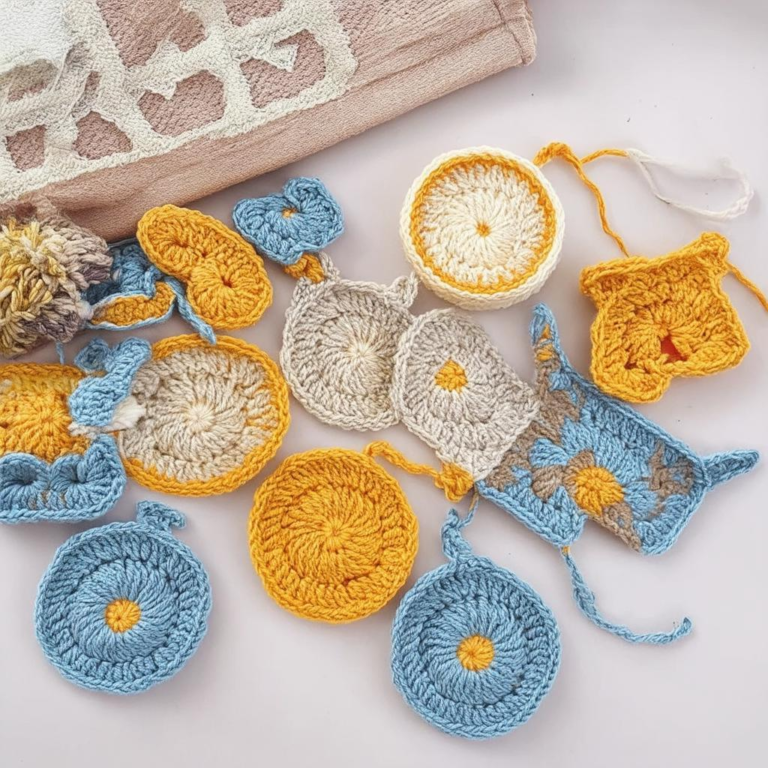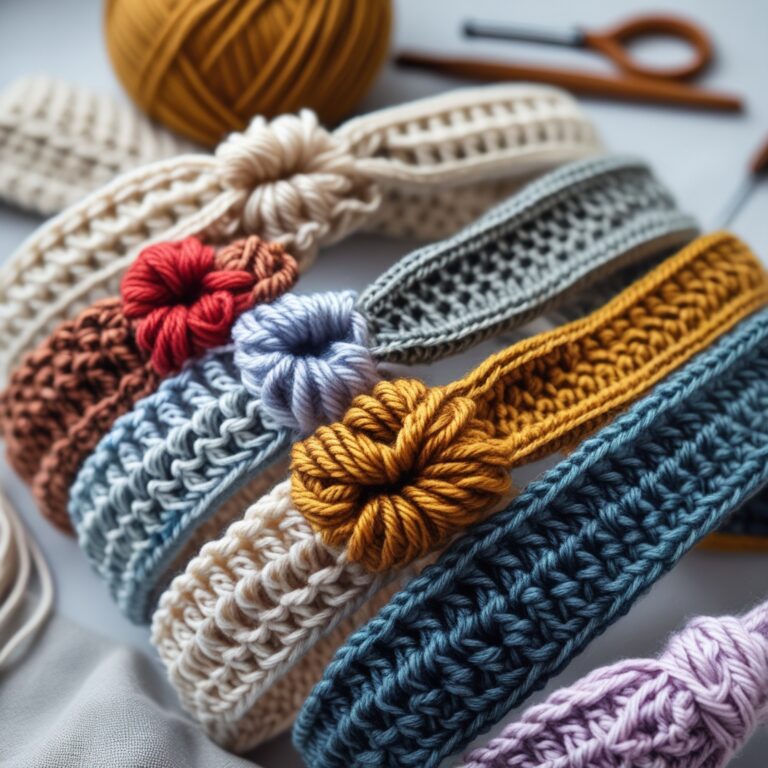[Check out the latest arrivals now!](https://www.amazon.com/s?k=ergonomic crochet hooks&s=date-desc-rank&tag=smartymode-20)
Ergonomic Crochet Hooks Compared: Find Your Perfect comfort & Speed
Crocheting, a beloved pastime for many, can sometimes lead to discomfort, hand fatigue, and even pain. The repetitive motions and sustained hand positions required can take a toll on your joints and muscles, particularly for those who dedicate significant time to their craft. However, the solution might be as simple as upgrading your tools.Traditional crochet hooks, while functional, often lack the features needed to support long hours of agreeable crocheting. This is were ergonomic crochet hooks come into play, offering a vast range of designs and materials specifically engineered to enhance both comfort and speed. this article delves into the world of ergonomic crochet hooks, helping you navigate the options to find the perfect fit for your individual needs and preferences. By understanding the key differences between these hooks, you can ensure your crochet sessions remain enjoyable and pain-free.
[Explore Top rated ergonomic crochet hooks on Amazon.]
Understanding the Need for Ergonomic Crochet Hooks
before delving into comparisons, let’s understand what sets ergonomic crochet hooks apart from their standard counterparts and why making the switch can be so beneficial.
Why Traditional Hooks Can Be Problematic
Traditional crochet hooks typically feature a slim, cylindrical handle that often provides limited grip. This narrow shape can lead to several issues:
Finger Fatigue: The small diameter requires a tighter grip, leading to finger cramping and fatigue during extended crochet sessions.
hand and Wrist Strain: maintaining a tight grip and performing repetitive motions can place undue stress on the hand, wrist, and forearm muscles. Discomfort and Pain: Over time, chronic use of traditional hooks can contribute to conditions such as carpal tunnel syndrome, tendonitis, and other repetitive strain injuries.
Reduced Speed: A less comfortable grip often results in slower crocheting speeds as crocheters are forced to take breaks due to discomfort.
How Ergonomic Hooks Provide Relief
Ergonomic crochet hooks address these issues by incorporating design features that promote a more comfortable and natural grip:
Larger Handle Diameter: Ergonomic hooks have thicker handles, often with contoured shapes, allowing for a relaxed grip that distributes pressure evenly across the hand.
Cushioned grips: Many ergonomic hooks include cushioned or textured materials on the handle, ensuring a secure and comfortable grip that reduces the effort needed to hold the hook.
shaped Handles: Ergonomic handles are often molded to fit the natural curves of the hand, providing increased comfort and minimizing hand fatigue.
reduced Tension: the comfortable grip encourages a more relaxed hand position, significantly reducing stress on joints and muscles making it ideal for crocheters seeking to protect their hand health.
Improved Efficiency and Speed: With less fatigue and a more secure grip, crocheters can maintain a more consistent pace and frequently enough improve their overall crocheting speed.
[Explore Top Rated ergonomic crochet hooks on Amazon.]
Exploring the Different Types of Ergonomic Crochet Hooks
The market offers a wide array of ergonomic crochet hooks,each designed with unique features. Understanding key differences will enable you to make an informed decision tailored to your specific crocheting habits.
Handle Material and Construction
The material of the handle significantly impacts the comfort and overall feel of the hook.Here are some common options:
Plastic: Plastic handles are lightweight, durable, and frequently enough come in vibrant colors. They are a budget-friendly option and can be a good starting point for those new to ergonomic hooks. However, they might not offer the same level of grip as other options and may feel less luxurious.
Rubber: Rubber grips provide excellent slip resistance, making them ideal for those who struggle with a secure grip.They are frequently enough used as an overlay on a plastic or metal handle, adding comfort and reducing slippage [1].
Silicone: Similar to rubber, silicone handles are extremely comfortable, soft to the touch, and provide a secure, non-slip grip, and can be more durable than rubber. They can provide a more premium feel but may cost slightly more than rubber handles.
Wood: wooden handles, frequently enough crafted from sustainably sourced materials, offer a warm, natural feel in hand and a satisfying tactile experience.Different wood types offer variations in weight and texture [2]. they’re favored by many crocheters for their aesthetic and comfortable grip, but care should be taken as they may not be as hardy as plastic hooks.
Handle shape and Design
Handle shape and design also play an essential role in ergonomics:
cylindrical Handles: While basic, ergonomic versions have larger diameters compared to traditional hooks, reducing strain and offering a more comfortable grip. They’re often a great starting point for crocheters and are easy to hold.
Tapered Handles: These handles gradually widen from the hook head to the base, conforming to the natural shape of the hand and offering more grip and control. These are good for people who like to hold their hook in different positions.
Contoured Handles: Contoured handles feature custom curves and molded shapes that are designed to specifically fit the natural position of the hand, providing enhanced comfort and support, and often reduce fatigue. These are designed to fit the hand perfectly.
Hybrid Shapes: Some hooks feature a combination of the above,incorporating subtle tapers or contours on a mostly cylindrical base,providing options for different crocheting styles.
Hook Material and Construction
While the handle focuses on comfort, the hook itself impacts the functionality of your crochet and the smoothness of your yarn.
Aluminum: This is a common material, widely used for the hook head. It is lightweight, affordable, and glides easily through yarn, they may often be the starting point for new crocheters.
Steel: Steel hooks are highly durable and often preferred for extremely fine crochet work, like doilies or thread projects. This is favored by thread crocheters due to their strength and fineness.
Plastic: Plastic hooks are common in larger sizes, especially for bulky yarn projects.They are affordable and lightweight. Some crocheters find they offer better glide for certain fibers.
Wood/Bamboo: These are known for their smooth glide and warm feel, and they can be particularly gentle on the yarn. They are often used for both the handle and hook. The natural material gives them a high-quality feel.
Hook Styles: Inline vs. Tapered
The shape of the hook itself—specifically the shape of the head— dramatically affects how yarn glides onto and off of it, and how stitches are formed.
inline Hooks: These hooks have a rounded point and a uniform shaft diameter, enabling you to create consistently sized stitches. The throat (the part of the hook that catches the yarn) is typically the same width as the shaft, allowing for smoother and more controlled yarn flow. The stitches tend to be straight and in line, and it is preferred by some crocheters for that reason.
tapered Hooks: On tapered hooks, the hook’s throat has a smaller diameter than the main shaft. this feature is designed to make picking up loops easier, especially when working with thicker or more stubborn yarns. It allows room for slight variations in sizing which many crocheters find is suitable to their style of working. Hybrid hooks Some manufacturers also introduce hybrid hook shapes, combining features from both inline and tapered styles that aim to offer the best of both worlds. These can suit a broad variety of crocheters who hold their hooks in different ways.
[Explore Top Rated ergonomic crochet hooks on Amazon.]
Top Ergonomic Crochet Hooks: A detailed Comparison
With this information in hand, let’s look at how some popular ergonomic crochet hooks stack up. (Note: As there are no specific brands listed in the provided data, I will be describing popular characteristics and design features commonly found in well-reviewed ergonomic hooks, rather than specific brand comparisons.)
Comfort-Focused Designs
Wide, Cushioned Handles: Many brands strive for a design that prioritizes hand comfort. consider hooks with handles that incorporate thick, cushioned grips made from silicone or soft rubber. These are particularly beneficial for crocheters who suffer from arthritis or other grip-related issues, allowing for a more relaxed and comfortable grip. The handles are often crafted with an ergonomic contour that matches the natural curvature of the hand.
Lightweight Materials: Ergonomic hooks made from lightweight materials such as plastic or aluminum are frequently preferred by individuals who want to avoid needless hand fatigue, especially when working on larger projects. The balance is also crucial, as a balanced hook can make it more comfortable to hold for extended periods.
Finger Placement Contours: Some designs incorporate sculpted indentations or soft ledges that guide and allow more precise finger placement, ensuring a more relaxed hand posture.This can enhance control, and is particularly attractive to fast crocheters.
Smooth Glide Hooks: Hooks made from polished aluminum, steel, or treated wood ensure the yarn smoothly moves on and off the hook, minimizing friction and yarn snags, therefore creating a more pleasant crocheting experience.
Speed-Enhancing Designs
Inline Hook Shape: As described earlier,the consistent diameter of inline hooks can contribute to creating uniform stitches,which can allow for faster and consistent work. Many find that their flow is improved when using inline style hooks.
Efficient Grip and handling: The right handle thickness and grip texture can improve movement speed for the crocheter, and allow their hand to maneuver the hook with ease and precision. Secure grip will give more control over the hook and help them to crochet much faster. Length of the Shaft: A generous shaft length – the section between the hook and the grip – gives you more flexibility to control the yarn. This is particularly useful when creating complex stitches or undertaking Tunisian crochet [3].
Smooth Transition from Handle to Hook: A seamless transition from the handle to the hook allows for a smooth flow of yarn and contributes to faster, less interrupted crocheting. This allows the yarn to travel with minimal friction.
Combination of Comfort and Speed
many ergonomic hooks excel in both comfort and speed features:
Hybrid Handle Shapes: Hooks that combine gentle tapers and ergonomic contours can provide the proper grip and handling needed for speed while ensuring comfort to reduce the risk of strain. These can suit crocheters who use a “pencil” or “knife” grip on their hooks.
Quality Material Construction: Hooks that utilize advanced materials and meticulous molding are capable of providing both comfort and efficiency through smooth transitions and good design choices. The quality is usually evident in the details of these hooks.
[Explore Top Rated ergonomic crochet hooks on Amazon.]
Choosing the Right Ergonomic Hook for You
Selecting the perfect ergonomic crochet hook is a very personal decision; there isn’t a one-size-fits-all solution. Here’s a guide to help you determine which features matter to you:
Consider Your Crocheting Style
Grip Style: How do you hold your hook? Do you use a pencil-grip, an overhand grip, or a palm-down grip? This will help you determine the most comfortable design.
Crocheting Speed: Do you prefer speed or ease? Depending on how quickly you intend to work, choosing a style tailored to this will be most important.
type of Projects: Do you primarily crochet with fine thread,medium-weight yarn or bulky yarn? Larger diameter grip sizes are most comfortable for bulky yarn as the yarn is often thicker and heavier,whereas thinner hooks will be most suited to thread crocheting.
Common Stitches: What kind of stitches do you most frequently enough do? The shape of the head of the hook can affect how well you can complete these kinds of stitches, and influence the consistency and comfort while working.
Consider your Physical Needs and Preferences
Hand Size and Sensitivity: Consider your hand size in relation to handle diameter. if you have small hands, very large and bulky handles may feel clunky. If you have larger hands, the same applies to smaller handles.Take into account any sensitivities you may have in your hands, as some materials may be irritating.
Existing Hand Conditions: If you’re experiencing conditions like tendonitis,carpal tunnel syndrome,or arthritis,it is crucial to select ergonomic options that significantly reduce joint strain. Opt for hooks with supportive, cushioned grips. Material Preferences: Some crocheters prefer the feel of natural materials, while others are more interested in function and durability. Consider if you prefer the warmth and weight of wood or the lightness of plastic or aluminum.
Personal Aesthetics: Some consider this extremely important to their enjoyment of the craft. if aesthetics are important to you, consider the various designs that are available, as well as the different materials and colors to find what you like most.
Trial and Error - try Before Committing
Sample a Variety of Hooks: Whenever possible, try holding different ergonomic hooks to get a sense of how they feel in your hand. If you are able to, borrow a set or visit a local store to handle the hooks in person.
Test Different Materials: Some crocheters prefer silicone handles, while others like wood or plastic. Experiencing how different materials feel can definitely help you choose.
Start with a Single Hook: Before committing to an entire set,experiment with a single hook in a size that you regularly use. This allows you to test the specific hook without spending money on a whole set.
Consider the Overall Value
Cost vs. Benefit: While ergonomic hooks may be more expensive than traditional hooks, the benefits of long-term comfort and pain prevention are well worth the additional cost. Consider it an investment in your crafting hobby, for the enjoyment of comfort and a great product.
Longevity and Durability: Invest in hooks that are known for their quality and durability, to ensure that they will last for a long time, and you’ll get maximum enjoyment and use out of them.
Value for Your Budget: Review the features of different crochet hooks and choose the set/option that fits your budget. There are great hooks at every price point,and you will likely find several to suit your particular needs.
[Explore Top Rated ergonomic crochet hooks on Amazon.]
Maintaining and Caring for Your Ergonomic Hooks
Proper care can extend the life of your ergonomic crochet hooks and ensure continued smooth performance:
Storage: When not in use,store your hooks in a designated case or pouch to protect them from damage [4]. This will help prevent them from scratching,breaking,or snagging other items. Cleaning: If your hooks become sticky or dirty, gently clean them with a damp cloth.Avoid harsh chemicals and solutions that could damage the materials. Mild soap and water are usually enough to remove fingerprints and debris and make them look good as new.
Avoid Extreme Temperatures: Don’t leave your hooks in direct sunlight or in very hot vehicles, as extreme heat can distort plastic handles and damage wooden ones. it is indeed best to transport them in a cooler area where they are shielded from temperature extremes.
Handle with Care: While durable, ergonomic hooks can break or become damaged if dropped or handled roughly. Treat them with care to prevent damage, warping or breaking.
* Regular Inspection: Occasionally check the hook tips for any signs of wear or damage. Damaged hooks can snag the yarn, so replace any hooks that show cracks, bends, or other damage.[Explore Top Rated ergonomic crochet hooks on amazon.]
Conclusion
Investing in ergonomic crochet hooks is a step toward not only improving your comfort and speed, but also protecting your hand health in the long run. It’s not just an upgrade but a commitment to your love for the craft, ensuring that you can enjoy crocheting for years without discomfort. By evaluating different types of handles, exploring various materials, and experimenting with different styles, you can find hooks that minimize discomfort and increase your crafting efficiency. The journey to find the perfect hook may require some trial and error, but the benefits are well worth the effort, and your hands will thank you for your decision. Whether you are just beginning your crocheting journey or are a seasoned veteran, this careful choice will not only improve your outcomes, but ensure you can continue to enjoy this wonderful craft.
[Shop budget-friendly options now!](https://www.amazon.com/s?k=ergonomic crochet hooks&s=price-asc-rank&tag=smartymode-20)

